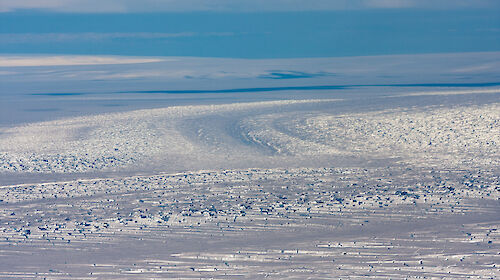“[The campaign] is really considering four main questions,” the Australian Antarctic Program’s chief research officer Dr David Souter said.
“The first is how the glacier has changed over time and how it’s changed in the most recent period, the second is the stability of the glacier, the third is what the geology of the Denman glacier is and finally, what the biodiversity of the region is and how that’s changing with the climate.
The three-year campaign technically started last year, with materials airdropped in to build the tent platforms and other facilities.
“Last year was essentially a prepatory year," Dr Souter said.
“This year is the really critical year in terms of delivering the science. Some of the instruments will be left in place and they'll collect data over winter and into the summer. They'll be collected and a small amount of field work done next year.”
The organisations involved in the Denman Terrestrial Campaign are the Australian Antarctic Division (AAD), the Australian Centre for Excellence in Antarctic Science (ACEAS), Securing Antarctica's Environmental Future (SAEF) and the Australian Antarctic Program Partnership (AAPP).








